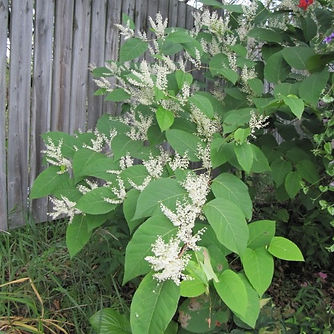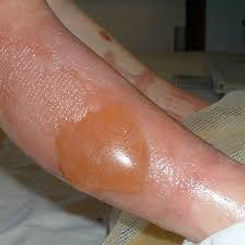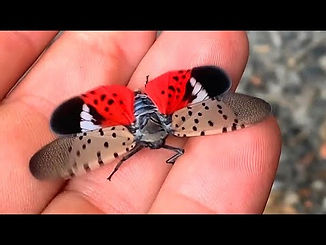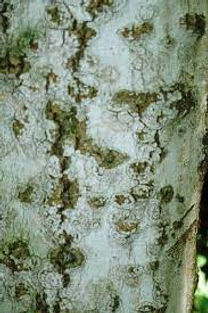
Invasive Species
As the climate changes, so will ecosystems and habitats. This can lead to changes in the geographic range of many species within and outside of Western New York, including the Southtowns.
What are invasive species and why are they a problem?
-
A non-native species is labeled “invasive” when it competes with native organisms for limited resources. This can cause harm to the environment, the economy, and/or human health. Invasive species organisms can be plants, animals, insects, and even microscopic bacteria. Species may become established for a number of reasons:
-
Lack of a natural check on the population, such as a predator, parasite, or pathogen that allows them to outcompete native species.
-
They may also fill an ecological niche that was vacant before they arrived, such as an ability to take advantage of early or late season growth while native species are dormant.
-
Forms of human disturbance may also alter the habitat in a way that it is no longer suitable for native species, but invasive species may thrive in such conditions.
-
Invasive species often have a high reproductive rate, reach maturity early, have effective dispersal mechanisms, disperse rapidly, and/or have a broad tolerance range to environmental conditions. (Source: WNY PRISM, Partnership for Regional Species Management)
Vector Borne Diseases
The same climate changes that will impact habitat for plants, wildlife, insects, and bacteria, can also increase the presence and spread of Vector Borne Diseases (VBDs) such as mosquitos and ticks. As climate conditions change, habitat suitability for an identified 13 vector-borne diseases in Erie County could also change over time. For example, the expanded range of the Asian Tiger Mosquito, a species associated with multiple diseases (Chikungunya, Dengue Fever, & West Nile Virus) may occur in the our region over the next several decades. Likewise, In a good news/bad news scenario, by 2050, Erie County may be less suitable to the Deer Tick which carries Lyme disease, but may then become highly hospitable for the Asian Longhorned Tick- a tick that causes disease in cattle.
(Sources: WNY PRISM, 2020, New York States's Climate Action Plan (ClimAid); Erie County Hazard Mitigation Plan)
Invasive Plants
Aggressive invasive plant species are already found in the Town of Aurora. Japanese Knotweed, which has spread throughout Cazenovia Creek, and Japanese Stiltgrass both threaten our local headwaters
as water dispersed species. Tartarian Honeysuckle, Multiflora Rose, and Common Buckthorn are also
a few of the commonly sited invasive plants in our yards, meadows, and parklands.
These plant species reduce biodiversity in our wetlands and young forests.
Tree of Heaven, a popular residential landscape tree, grows and reproduces very rapidly,
crowding out native species while secreting a chemical into the soil that is toxic to surrounding plants.
This species is also the preferred host plant to a potentially devastating invasive leafhopper called
Spotted Lanternfly. Another popular non-native species, the Norway Maple, is not as aggressive
but it fails to contribute to the area’s biodiversity and wildlife food chain in the
same beneficial way as our native Oaks, Beeches, Birch, and Sugar Maples.
Giant Hogweed and Wild Parsnip are two particularly harmful invasives due to their dangerous impacts to human health. Giant hogweed is a VERY LARGE plant that can cause painful burns and permanent scarring. Brushing against or breaking the plant releases sap that, combined with sunlight and moisture, can cause a severe burn within 24 to 48 hours. It threatens to expand its range via our local creeks and streams.
Wild Parsnip can thrive in dry and wet soils and is often spotted in pastures, abandoned fields,
and along roadsides. As with Giant Hogweed, Wild Parsnip can also cause a chemical burn
to human skin from the sap produced within its leaves, stems, flowers, and fruits. This reaction results in intense burning, blistering, skin discoloration, and/or rashes which can last up to two years.
Invasive Insects & Diseases
The Emerald Ash Borer is a destructive wood boring invasive pest from Asia. It was first identified
in the United States in 2002 and is now in the process of killing Ash trees in our region.
Citizens throughout NY are also on the lookout for the Hemlock Wooly Adelgid, a sap-sucking beetle that is responsible for the destruction of our native Eastern Hemlock and spruce trees. Another invasive, the Box Tree Moth can significantly damage and potentially kill Boxwood plants if left unchecked.
Don't let beauty deceive you! The Spotted Lantern Fly is a threat to our local fruit crops and agricultural products including grapes, apples, and hops. It also infests ornamental and woody trees. The Tree-of-Heaven is one of its favorite hosts. Another invasive pest that is threatening our local farms, including one of our local fruit growers in the Town of Aurora, is the Spotted Wing Drosophila, an insect pest of small fruit and tree fruit crops. The European Cherry Fruit fly, a pest that lays its eggs in healthy fruit, is another threat to our farmers and has been detected in Northern Erie County. It also lays eggs in wild honeysuckles.
The survival of our Beech trees is threatened by both Beech Bark Disease and Beech Leaf Disease.
Beech Bark Disease is caused by an invasive scale insect that feeds on beech sap which then
allows fungus to enter the bark. Beech Leaf Disease is associated with a nematode and is even more destructive than Beech Bark Disease. This disease has only been discovered in recent years
and the cause and how it spreads is still being studied. Losing trees to these and other invasive pests directly impacts the ability of our forests to store carbon. Tree loss will also impact temperatures
in areas shaded by trees, particularly in the Village of East Aurora and other developed areas
that are susceptible to heat island effects caused by density of paved surfaces.
For a complete list of invasive terrestrial and aquatic plants, insects, and diseases in Western NY we recommend the following excellent resource

Cyanobacteria
In fresh water, such as our local lakes and ponds, harmful blooms are most commonly caused by cyanobacteria- also called blue-green algae. Cyanobacteria is a type of single-celled organism
called phytoplankton. Some cyanobacteria produce toxins (poisons) called cyanotoxins.
When people or animals are exposed to cyanotoxins, they can become sick by:
-
Skin contact with water containing toxins while swimming or doing other activities in the water
-
Drinking water containing toxins
-
Breathing in tiny droplets in the air that contain toxins
-
Eating fish or shellfish that contain toxins
-
Eating contaminated blue-green algae nutritional supplements
(Source: Center for Disease Contro https://www.cdc.gov/habs/environment.html)

Impacts on Wildlife
According to the National Wildlife Federation, invasive species cause harm to wildlife in many ways.
When a new and aggressive species is introduced into an ecosystem, it may not have any natural predators or controls. It can breed and spread quickly, taking over an area. Native wildlife may not have evolved defenses against the invader, or they may not be able to compete with a species
that has no predators. The direct threats of invasive species include:
-
Preying on native species
-
Outcompeting native species for food or other resources
-
Causing or carrying disease
-
Preventing native species from reproducing or killing a native species' young.
There are indirect threats of invasive species as well. They can:
-
change the food web in an ecosystem by destroying or replacing native food sources.
-
The invasive species may provide little to no food value for wildlife.
-
Invasive species can also alter the abundance or diversity of species that are important habitat for native wildlife.
-
Changing the conditions in an ecosystem, such as changing soil chemistry or the intensity of wildfires.
For example, native birds rely on native insects who then rely on specific native plants.
These relationships have evolved over tens of thousands of years. The aversion of insects to invasive plants is probably the main reason that Callery/Bradford pear trees (now regarded as invasive) were planted throughout many urban areas in the United States, including the Village of East Aurora — local insects are just not interested in them. Unfortunately, that means fewer insect meals
for the birds who rely on those insects, especially during nesting season.

Economic Impacts
The United States Department of Agriculture (USDA) reports that the economic and social impacts of invasive species include both direct effects of a species on property values, agricultural productivity, public utility operations, native fisheries, tourism, and outdoor recreation, as well as costs associated with invasive species control efforts. A 2021 study estimated that invasive species have cost North America $2 billion per year in the early 1960s to over $26 billion per year since 2010.
In Erie County's Lake Erie, examples of species with economic impacts include Zebra Mussels, which block intake pipes for power generation and water treatment facilities, and Sea Lamprey, which can reduce the populations of locally significant fish species through predation.
Invasive species can also negatively impact outdoor recreation, such as fishing, hunting, hiking, wildlife viewing, and water-based activities. They can damage a wide array of environmental services that are important to recreation, such as water quality, plant and animal diversity, and species abundance.






















